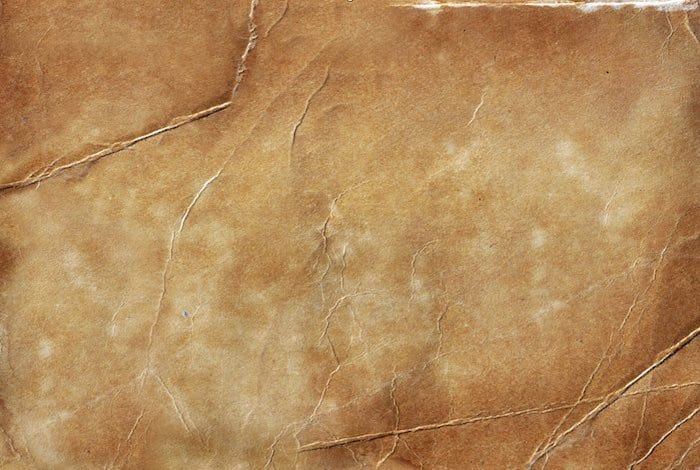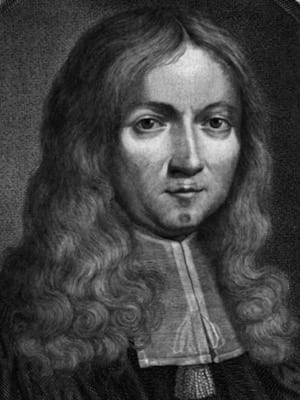Raymond Vieussens
Raymond Vieussens (or Raymond de Viessens, Raymundi Vieussens, and Raymundo Vieussens; *1641 – 1715) was a French physician and anatomist.
He is renowned for his pioneering work on cardiac and nervous system anatomy. Viessens also published some of the first descriptions of mitral stenosis, the pulse of aortic insufficiency, and the structure of the ear.
His name is eponymous with Pulse of Viessens (1715), valve of Viessens (1706), Viessens ring (1706), circle of Viessens, Viessens annulus
Biography
- Born sometime between 1635-1641, Viessens, Rouergue, France
- 1670 – Completed medical education at University of Montpellier
- 1671 – Appointed as a physician to the Saint Eloi Hospital in Montpellier
- 1684 – Published his pioneering work on neuroanatomy ‘Neurographia universalis‘, based on over 500 post-mortem dissections he conducted
- 1688-93 – Appointed by King Louis XIV to the physician of the royal family
- 1699 – Elected to the Académie des Sciences
- 1705 – Published his comprehensive and renowned work on the vascular and lymphatic system, titled ‘Novum vasorum corporis humani systema‘
- 1706 – Published ‘Nouvelles découvertes sur le coeur‘, which included the original description of the valve of Viessens, Viessens ring, and ducti carnosi (no known as Thebesian valves)
- 1707 – Promoted to ‘Counsellor of State’ by King Louis XIV,
- 1715 – Published ‘Traité nouveau de la structure et des causes du mouvement naturel du coeur‘ which provided some of the first accounts of mitral stenosis and aortic insufficiency
- Died 16 August 1715, Montpelliar, France
Medical Eponyms
Pulse of Vieussens (1715)
Hyperdynamic and visible pulsations, later formally described by Corrigan in association with aortic regurgitation
Après avoir remarqué l’abattement de ses yeux et la pâleur de son visage, j’examinai son pouls qui me parut fort plein, fort vite, dur, inégal et si fort, que l’artere de l’un et de l’autre bras frappoit le bout de mes doigts autant que l’autoit fait une corde fort tendue et violemment ébranlée.
[Translation] “After noticing the dejection of her eyes and the pallor of her face, I examined her pulse, which seemed to me very full, very fast, hard, uneven and so strong, that the artery of both the arms struck the tips of my fingers as much as the other made a rope very tight and violently shaken.”
Other Eponyms
- Valve of Viessens (1706). The valve of Viessens is at the junction between the great cardiac vein and coronary sinus.
- Viessens Ring (1706).
- Circle of Viessens. The circle of Viessens refers to the collateral vessels between the left anterior descending artery of the heart and the right coronary artery.
- Viessens’ annulus. The annulus refers to the depression at the fossa ovalis of the heart.
Key Medical Attributions
Viessens provided arguably the first comprehensive anatomical descriptions of the brain, spinal cord, peripheral nerves and heart in the 17th century. These works were based on over 500 post-mortem dissections he performed at Saint Eloi Hospital.
His neuroanatomy descriptions include the celiac ganglia, white matter within cerebral hemispheres, fifth ventricle, dentate nuclei, pyramids, olivary bodies, and pathway from the optic nerve to the lateral geniculate nucleus. Viessens’ original non-eponymous cardiac anatomy descriptions include the coronary arteries, coronary sinus, coronary arterio-venous circulation, and the myocardial fibres of the ventricles.
Controversies
While Viessens’ name is associated with numerous anatomical eponyms, the international standard on human anatomic terminology ‘Basle Nomina Anatomica’ in 1895 omitted most eponymous names to consolidate the number of anatomical terms.
Major Publications
- Vieussens R. Neurographia universalis. 1684
- Epistola Scripta a Raymundo Vieussens Doctore Medico Monspeliensi ad Clarissimos Viros Societatis Regiae Londinensis, de Sanguine Humano. 1698
- Vieussens R. Nouvelles Découvertes Sur le Coeur. 1709
- Vieussens R. Traité nouveau de la structure de l’oreille, divisé en deux parties. Toulouse: Guillemette. 1714
- Vieussens R. Traité nouveau de la structure et des causes du mouvement naturel du coeur. Toulouse: Guillemette. 1715
- Vieussens R. Oeuvres Françoises Volume I; Volume II. 1715
- Vieussens R. Tractatus duo. Primus, De remotis et proximis mixti principiis in ordine ad corpus humanum spectatis. Secundus, De natura, differentiis, subjectis. 1715
References
- Sachs B. Raymond de Vieussens. The proceedings of the Charaka Club. 1910; 3: 99-105
- Major RH. Raymond Vieussens and his treatise on the heart. Annals of Medical History. 1932; 4: 147-154.
- Loukas M, Clarke P, Tubbs RS, Kapos T. Raymond de Vieussens. Anat Sci Int. 2007 Dec;82(4):233-6.
- Vergani F, Morris CM, Mitchell P, Duffau H. Raymond de Vieussens and his contribution to the study of white matter anatomy: historical vignette. J Neurosurg. 2012 Dec;117(6):1070-5.
- n.a. Raymond Vieussens. Nature. 1941;147(3737):743.
- Zhang G. Eponyms in Aortic Regurgitation. LITFL 2019

eponym
the person behind the name
Doctor in Australia. Keen interest in internal medicine, medical education, and medical history.

